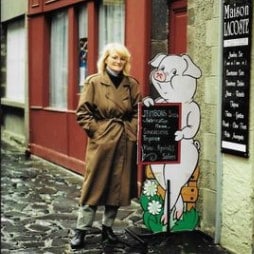
Home » The Bubble | A Worldwide Concept & Welcoming Newcomers

The first dog shows as we know them were held in the middle 1800s, and the one thing that has changed more than anything else is that the “dog world” today is truly a worldwide concept. Conformation shows and performance activities of all kinds exist in all developed countries. All of those who are part of the dog world as we know it have the same desires, the same goals, and the same fears. We want to promote and preserve all of our recognized breeds for the future, and some will introduce rare breeds from other countries. We do not want them to be so popular that there are problems of overpopulation, and we do not want them to be so rare and exclusive that it becomes difficult to preserve them.
Every country has a Breed Standard that is written in the language of their country, but for the national kennel clubs that belong to the FCI, they must approve it. There are different laws and traditions in different countries, from cropping and docking to limitations on the allowable ages for breeding and familial relationships between male and female. We now have dog shows on all continents, and individual dogs may be shown in multiple countries. Dogs are imported and exported, and frozen semen is flown from one side of the world to the other. All of this is beneficial in terms of breed preservation. Wars and natural disasters have created losses and bottlenecks in the past, and lost bloodlines have had to be recovered from other parts of the world. It was a good thing that breeders of the mid- and late-twentieth century made this possible.
In the past 25 years, international animal rights players have been doing their best to force and assist the creation of new laws that have impacted dog owners, breeders, and exhibitors. This has made it more difficult to breed litters or develop a breeding program around the world. No matter where we live now, we need to keep our eyes and ears open, both on what is happening on our home soil and in other countries too. I do not have the numbers worldwide (there is no such database available), but in some countries the annual breed registrations are back at the level they were during WWII! We are all in this together. In some breeds, the bloodlines in their countries of origin may have disappeared—but may still be found in some far-flung part of the globe. Some of the breeders of today put obstacles in the way, refusing to allow exports or by rejecting imports, with contractual limits on how dogs from their kennel are used. It is done for no other reason than maintaining exclusivity, and not for the benefit of their breed. If the dog world as we know it is to survive, I believe that more international communication and co-operation will be necessary.
Back on the home front, one of our biggest problems is that so many people who have come into the dog world in the last 10 years have no past history with which to compare current trends. They see what has become the reality in recent years as regards show entries and AKC breed registrations and accept that as normal. They have no concept of what it was like in the past with larger classes and enough new puppies for clubs to hold a puppy match. We need to educate and encourage newer breeders and exhibitors, but the problems go beyond their ability to find a
show-quality puppy.
Newcomers are all too often being actively discouraged before they even start. If they have already found the puppy of their dreams, the first roadblock is the veterinarian who scares them that if they do not spay or neuter their puppy they will die of cancer before they reach middle age. On various all-breed Facebook groups where people join to ask questions, the keyboard warriors come online with guns blazing. Newcomers will ask questions, hoping for answers from those who have experience in grooming, training—and breeding. If they are planning for a litter in the future, they will be presented with every worst-case scenario. They will be told how much they will have to spend, and that their bitch might die, but without answering the actual question.
I remember a discussion where somebody asked which steps they should take before breeding from their female, and one comment stood out for me. She was told that before doing anything she had to get all the bitch’s clearances and “once you’ve done that then you’ll know ‘if’ you can use her.” I was horrified at the idea that they were so sure there was likely to be a problem that they should fear the worst and not hope and expect a good result.
I remember a very nice young dog that a friend tried to use, but the dog did not know what to do. They toddled off to a repro clinic—and they collected nothing. They stopped showing the dog because they had read on social media that dog shows were “for the evaluation of breeding stock,” which meant there was no point in showing him! Unfortunately, I lived in another state and was unable to give them any encouragement to continue.
I see videos that people have shared from shows they have attended, and I think “THAT is the class?” as one puppy enters the ring. And I feel sad. Not good for the breed, and no fun for the owner. Just in and out, up and down, and once around the ring. How much encouragement does that provide the new exhibitor? Who did they meet? What contacts did they make? What makes them want to come back to do it all again? There is no simple answer, but we need to think outside the box and be creative. Encourage our newcomers, but do not stop there. Find ways to attract more people to visit dog shows. The huge interest in the “Meet the Breeds” events proves there is an audience out there. We just have to create ways to attract them.
Encourage our newcomers, but do not stop there. Find ways to attract more people to visit dog shows.
